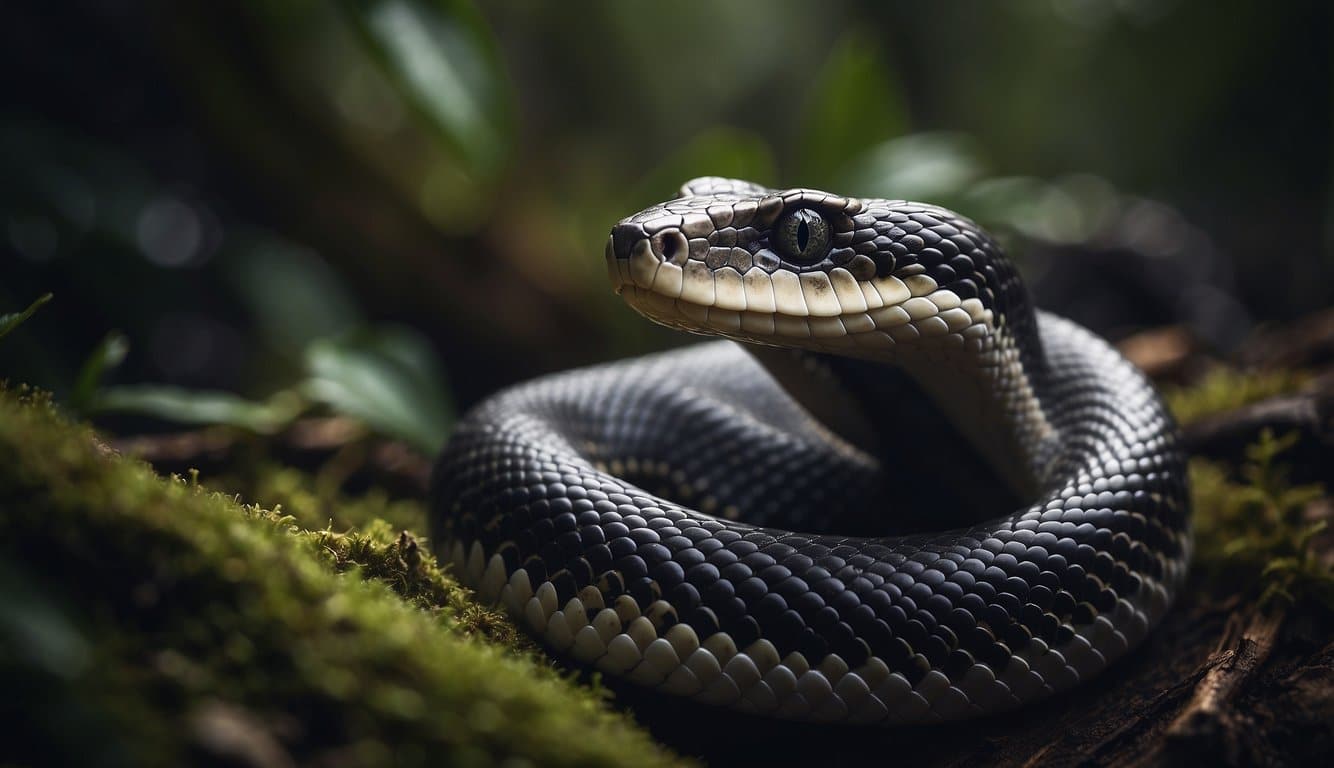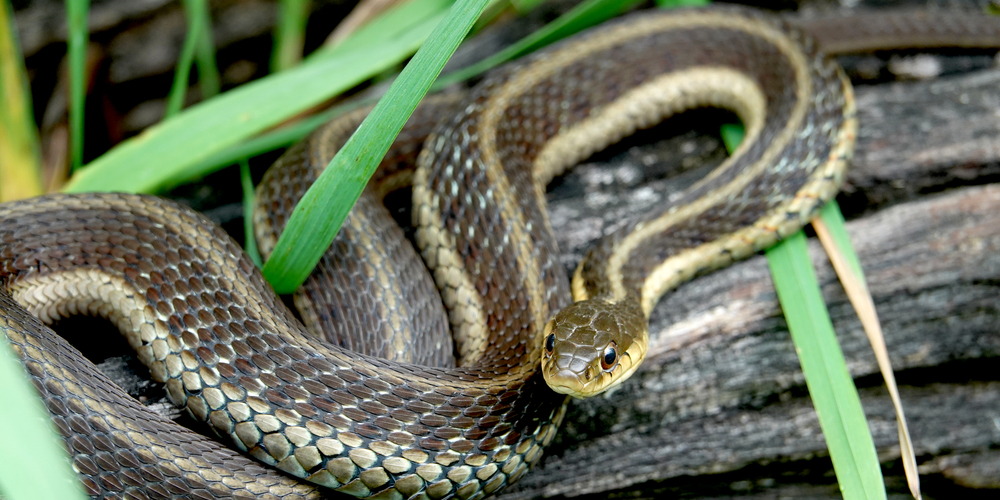| Question | Do Snakes Hibernate? |
|---|---|
| Answer | Yes, but it’s called brumation |
| More Info | Snakes undergo a process known as brumation, not true hibernation. Brumation is a period of dormancy in reptiles similar to hibernation in mammals but involves less sleep and more lethargy. During colder months, snakes become less active to conserve energy, significantly reducing their metabolic rate because they cannot regulate their body temperature internally. They often retreat to burrows or other sheltered spaces where they remain mostly inactive until temperatures rise again. |
Overview of Snake Hibernation
When your scaly friends encounter cold weather, they engage in a fascinating survival strategy known as brumation—a reptilian version of hibernation.
Unlike mammals that fall into a deep sleep during hibernation, snakes enter a state of dormancy where their metabolism slows down significantly, but they remain semi-conscious and can move around if necessary.
- Location: Your slithery companions prefer cozy spots out of the elements. They seek out refuges such as burrows or dens beneath the frost line—the part of the ground that doesn’t freeze.
These safe places include caves, hollow logs, and even burrows made by other animals.
- Duration: Brumation can last several months, typically beginning in the fall when temperatures drop and ending in the spring when the warmth returns.
- Body Functions: Snakes’ physiological processes slow down drastically during this period. Their heart rate and breathing decrease, and their need for food diminishes.
This reduced state of activity allows them to conserve energy.
- Species Variance: Not all snakes brumate; it depends on their native climate and species.
For instance, rattle snakes and garter snakes are known to undergo this annual cycle.
- Care for Pet Snakes: If you have a pet snake, maintaining a warm temperature in their habitat can prevent them from entering brumation.
The ideal brumation conditions, if necessary for a species’ well-being, include low temperatures between 35-50°F and humidity levels at 40-70%.
Once temperatures reach around 60°F, snakes typically come out of brumation.
Physiological Adaptations for Hibernation
Before the onset of winter, snakes undergo remarkable physiological changes to survive the cold months. These adaptations are crucial for conserving energy when food is scarce and temperatures plummet.
Metabolic Changes
- Reduction in Metabolism: Your snake will drastically slow down its metabolism during hibernation. This process allows it to conserve as much energy as possible.
- Decreased Heart Rate: Alongside a slower metabolism, the heart rate drops to minimize energy expenditure.
Body Temperature Regulation
- Behavioral Thermoregulation: Snakes often move to regulate their body temperature. During hibernation, they seek out microhabitats that offer optimal conditions for survival.
- External Temperature Dependence: As ectotherms, snakes rely on the environment to manage their body heat.In preparation for hibernation, they must find a location that maintains a stable and suitable temperature range.
Common Hibernation Habitats
When temperatures drop, snakes seek out specific environments to enter a state of dormancy. These habitats are crucial for their survival during cold periods.
Underground Hibernacula
- Natural Burrows: These are often the work of other animals and provide a pre-made retreat for snakes. Soil composition in these areas keeps the temperature stable, which is vital for their preservation.
- Rock Crevices: Snakes also use narrow openings within rocks that offer protection from predators and insulation during winter.
Man-Made Structures
- Basements: Your own home could unintentionally become a hibernation habitat. Snakes often find their way into basements, drawn by the relative warmth and quiet.
- Piles of Rubble: Leftover construction materials can create inadvertent shelters for hibernating snakes, providing numerous hidden spaces within to stay during winter.
Species-Specific Hibernation Behaviors
Snake hibernation isn’t a one-size-fits-all scenario; various species exhibit unique adaptations and methods for surviving the cold months. Your understanding of these behaviors can greatly enhance your appreciation of these fascinating reptiles.
Duration of Hibernation
- Garter Snakes: Typically, you’ll find that garter snakes may hibernate for several months depending on the local climate, with periods extending from late fall into the early spring.
- Rattlesnakes: These snakes often have a shorter hibernation period, as they are found in more diverse climates where extreme cold is less consistent.
Group Hibernation Practices
- Shared Hibernacula:
- In some cases, like with rattlesnakes, you’ll discover that they share their hibernation spaces with other species, including other rattlesnakes and sometimes even different snake species. This is known as communal hibernation.
- Another point of interest is that arboreal species, such as certain rat snakes, might choose isolated tree hollows to hibernate alone.
- Location Selection:
- Many terrestrial snakes choose underground burrows or rock crevices as their hibernacula. The location is key to maintain a temperature that’s above freezing and ensure survival during the winter months.
- Arboreal species, conversely, might opt for a hibernation strategy that finds them in tree-based structures, which provide shelter from harsh conditions at ground level.
Impact of Climate on Hibernation Patterns
Climate plays a pivotal role in the hibernation patterns of snakes, a fact that requires your attention if you’re intrigued by these slithering creatures. Changes in temperature and weather patterns can significantly affect when and how snakes enter their dormant state, commonly referred to as brumation rather than true hibernation.
Here’s a distilled look at how climate alters this vital process:
- Temperature Thresholds: Snakes rely on external heat to regulate their body temperatures. When external temperatures plunge, snakes retreat to their dens to begin brumation.
- Shifting Seasons: A warming climate may cause earlier springs, affecting the brumation period. Snakes could emerge sooner than expected, altering their reproductive and feeding cycles.
- Food Availability: The abundance of prey also changes with shifting climates, subsequently influencing the timing of brumation for snakes.
Studies and Observations:
- Snakes may initiate brumation at different times based on regional climate variances, such as:
Region Typical Brumation Start Temperate Late fall Subtropical Mild winter - Changes in climate can result in inconsistent hibernation patterns, with snakes possibly facing interrupted dormancy due to unseasonable warmth.
- Research suggests the possibility of climate-induced alterations in the length of brumation, potentially impacting snake survival and ecological balance.
Frequently Asked Questions
When exploring snake hibernation, it’s essential to equip yourself with accurate information. This section answers some of the most common queries regarding the hibernation of snakes.
How long is the hibernation period for snakes?
The duration of snake hibernation varies by climate and species, but typically, snakes may hibernate for several months, often from late fall to early spring.
At what temperatures do snakes typically enter hibernation?
Snakes usually enter hibernation when the ambient temperature drops to around 35-50 F, with most species seeking shelter once it’s consistently cold outside.
When can we expect snakes to emerge from hibernation?
Snakes generally emerge from hibernation when temperatures rise above 60 F, signaling a consistent warming trend that supports their active metabolism.
Are there specific conditions that determine where snakes hibernate?
Yes, snakes choose hibernation locations, often called hibernacula, that provide protection from the cold, such as burrows, rocks, and deep soil, to maintain a stable temperature.
Do snakes undergo hibernation in residential areas?
Snakes can hibernate in residential areas if they find suitable conditions, such as piles of leaves, unattended burrows, or crawl spaces that mimic their natural habitats.
What adaptations do snakes exhibit during the winter months?
During hibernation, snakes exhibit remarkable physiological adaptations. These include a drastically slowed metabolism and reduced heart rate. These enable them to conserve energy and survive the cold despite their cold-blooded nature.


